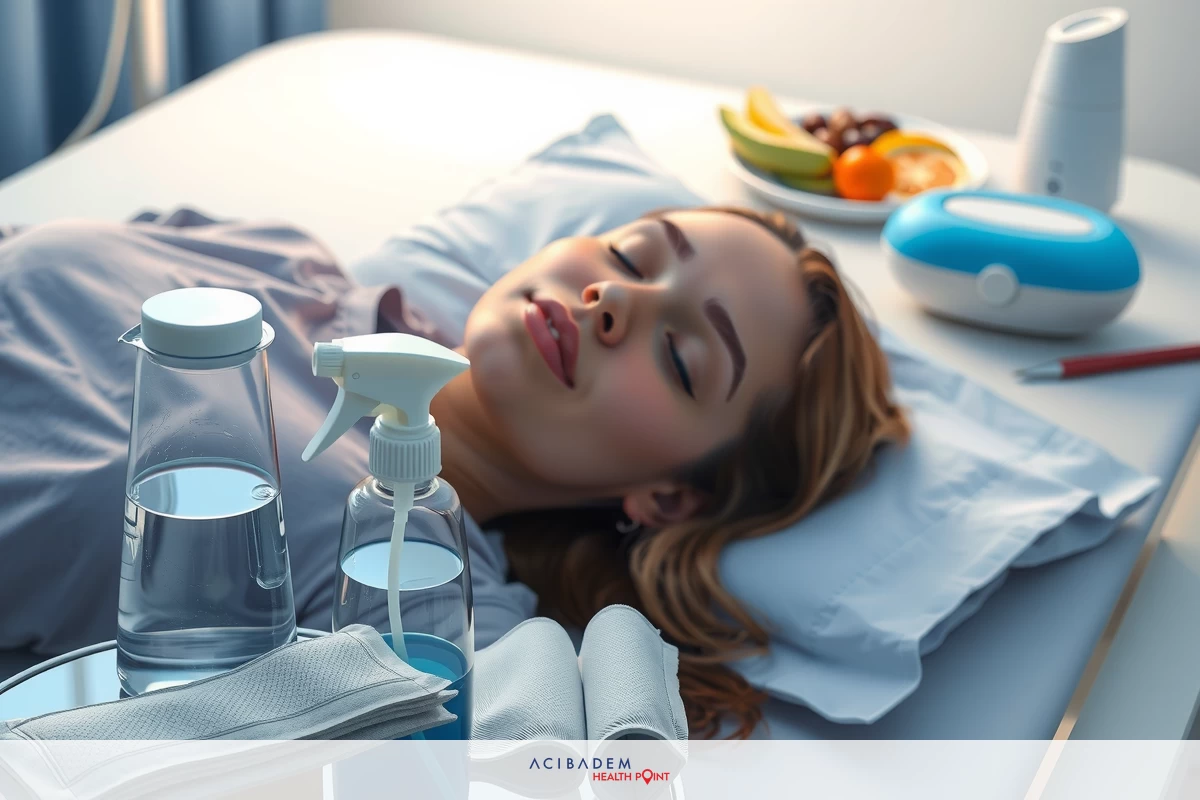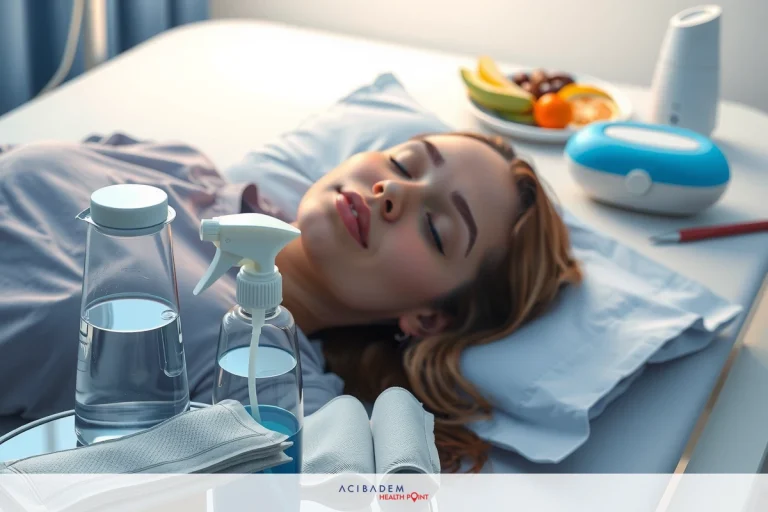How to Breathe After Rhinoplasty
How to Breathe After Rhinoplasty Rhinoplasty, while not a major operation, comes with its own set of post-operative challenges. One of the most common issues faced by patients is difficulty in breathing due to nasal congestion and swelling. The ability to breathe comfortably after rhinoplasty is crucial for a smooth recovery and an overall better post-operative experience.
This guide aims to help you navigate this issue by providing effective breathing techniques, tips on maintaining nasal hygiene, and ways to ease discomfort and congestion during your recovery period. With these guidelines, you can focus on healing and getting back to your normal routine as quickly and comfortably as possible.
Breathing Techniques for Post-Operative Recovery
How to Breathe After Rhinoplasty Many patients experience difficulties in breathing post-rhinoplasty due to the swelling and congestion in the nasal passages. One of the effective ways to cope with this is by practicing certain breathing techniques. Deep diaphragmatic breathing, for instance, not only improves oxygen flow but also aids in relieving stress and promoting relaxation. To perform this technique, one needs to lie down comfortably, place a hand on the abdomen, and take slow, deep breaths in through the mouth, letting the abdomen rise. Then slowly breathe out through the mouth, letting the abdomen fall.
Another beneficial breathing technique is pursed-lip breathing. This helps control shortness of breath and improves ventilation. To practice this, one needs to inhale deeply through the nose, then exhale slowly through pursed lips as if blowing out a candle. The exhalation should be twice as long as the inhalation. Practicing these techniques regularly can significantly improve comfort and ease respiratory distress during rhinoplasty recovery.
How to Breathe After Rhinoplasty Additionally, it’s essential to remember that during post-operative recovery from rhinoplasty, proper posture plays a crucial role in ensuring smooth breathing. Keeping your head elevated while sleeping or resting prevents blood and fluid accumulation in the nasal area, thereby reducing congestion and improving airflow. A recliner or extra pillows can help maintain the required elevation.
These breathing techniques and practices can effectively aid in your post-operative recovery from rhinoplasty. With patience and consistency, you will notice gradual improvements in your ability to breathe comfortably. Always remember to consult with your doctor before starting any new practices or if you encounter persistent issues
with your recovery process.
Maintaining Nasal Hygiene
After rhinoplasty, keeping the nasal area clean is vital to promote healing and prevent infection. One of the most recommended ways to maintain nasal hygiene postrhinoplasty is through saline rinses. Saline rinses not only cleanse the nasal passages but also keep them moist, reducing dryness and discomfort. It’s important, however, to avoid aggressive blowing of the nose during this process as it can lead to bleeding or increased swelling.
Another significant aspect of maintaining nasal hygiene is being mindful of your environment. Avoid exposure to dust, smoke, and strong odors as they may irritate the nasal passages and hinder your recovery. It’s also crucial to protect your nose from extreme temperatures, as both excessive heat and cold can dry out the nasal passages, causing discomfort and potential complications.

Following a healthy diet is another essential factor in maintaining nasal hygiene during your rhinoplasty recovery. Consuming foods rich in vitamins A and C can aid in tissue repair and boost your immune system. Staying hydrated by drinking plenty of fluids can also help keep the mucous membranes in your nose moist, facilitating easier breathing post-rhinoplasty.
By implementing these tips into your post-operative care routine, you can maintain good nasal hygiene which will contribute significantly to better breathing after rhinoplasty. Always remember that each individual’s recovery process is unique, so it’s important to follow the specific instructions provided by your healthcare provider for optimal results.
Tips for Easing Discomfort and Congestion
How to Breathe After Rhinoplasty After rhinoplasty, it’s common to experience some level of discomfort and congestion due to the changes made in the nasal structure. However, there are several strategies you can employ to alleviate these symptoms and facilitate a smoother healing process. Here are some tips that can help enhance your comfort during your rhinoplasty recovery:
- Stay Hydrated: Drinking plenty of fluids keeps the throat moist and reduces the dryness that can cause discomfort.
- Use a Humidifier: A humidifier can add moisture to the air, which can help reduce nasal dryness and make breathing more comfortable.
- Avoid Dry Environments: Try to stay in environments with adequate humidity levels to prevent your nasal passages from drying out.
- Sleep with Your Head Elevated: This can help reduce swelling and congestion, making it easier for you to breathe.
- Avoid Blowing Your Nose: Blowing your nose can increase swelling and cause bleeding. If you need to sneeze, try to do so through your mouth.
- Use Cold Compresses: Applying a cold compress around your nose can help relieve pain and reduce swelling.
- Follow Your Doctor’s Instructions: Always follow the post-operative care instructions provided by your healthcare provider. They are designed specifically for your healing process and recovery needs.
By following these tips, you can help ease discomfort and congestion during your postrhinoplasty recovery phase, making the process more manageable and comfortable.
Frequently Asked Questions
How long does it take to recover from rhinoplasty surgery?
The recovery time can vary from person to person, but typically it takes about 1 to 2 weeks for the initial healing process. However, complete recovery may take several months, as the swelling gradually subsides and the nose settles into its final shape.
Will I experience pain after rhinoplasty?
It is common to experience some discomfort or mild pain after rhinoplasty. Your surgeon will prescribe pain medication to manage any discomfort during your recovery period.
When can I resume normal activities following rhinoplasty?
It is important to avoid strenuous activities and exercise for at least a few weeks after rhinoplasty. Most patients can return to work and light activities within 1-2 weeks, but it's best to consult with your surgeon for personalized advice based on your specific case.
Will I be able to breathe properly after rhinoplasty?
While there might be temporary nasal congestion and difficulty breathing immediately after the surgery due to swelling, most patients experience improved nasal airflow in the long term, once the healing process is complete.
Are there any risks or complications associated with rhinoplasty?
As with any surgical procedure, there are potential risks and complications associated with rhinoplasty. These can include infection, bleeding, adverse reactions to anesthesia, and unsatisfactory aesthetic results. However, choosing a skilled and experienced surgeon can help minimize these risks. These are just a few of the commonly asked questions regarding rhinoplasty. It's important to have open communication with your surgeon and address any concerns or questions you may have during your consultation and follow-up appointments.











